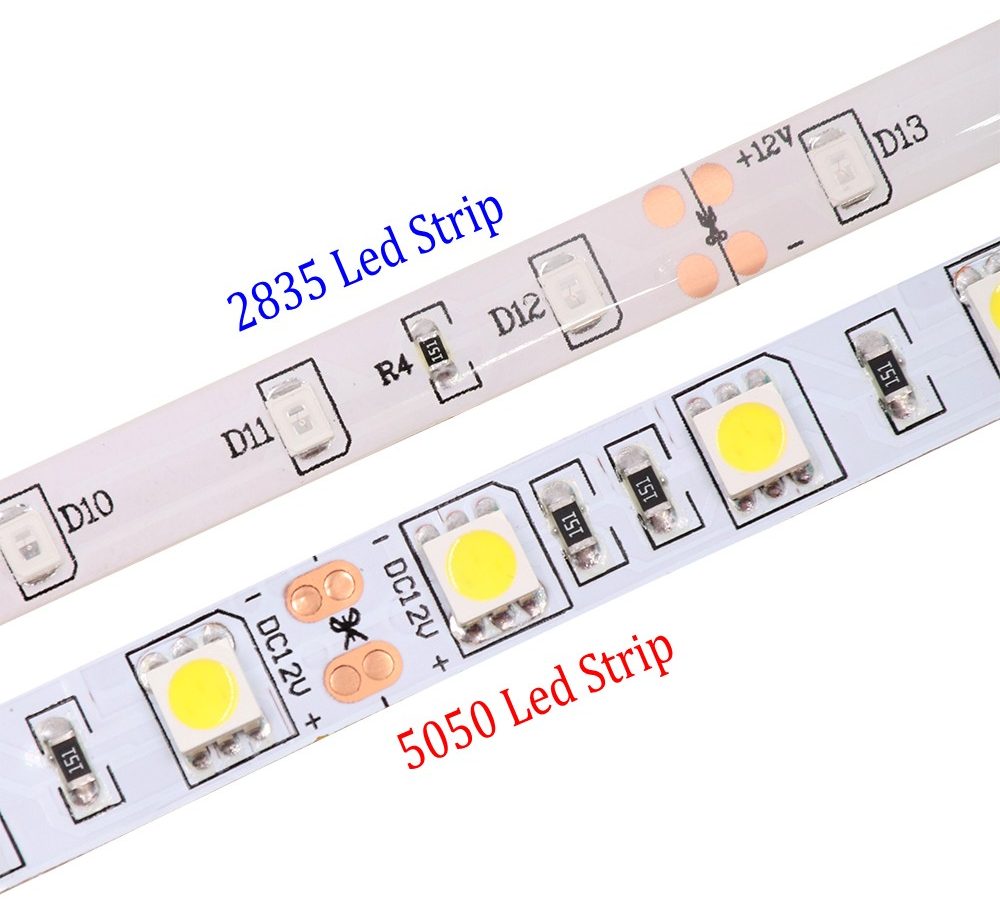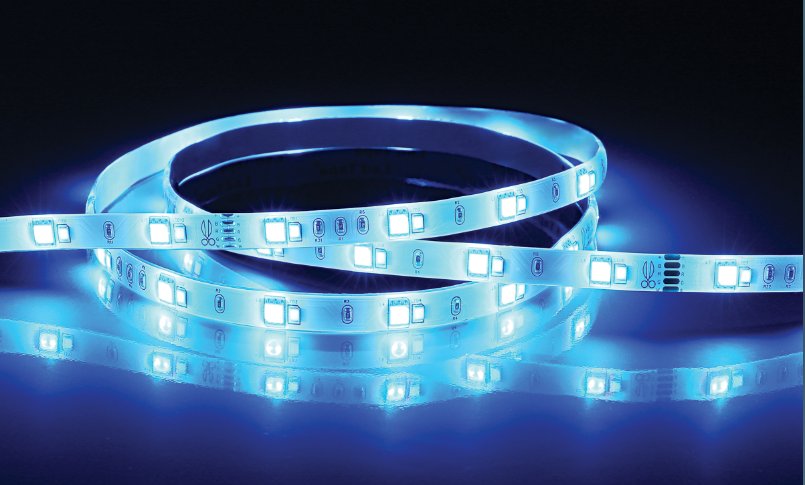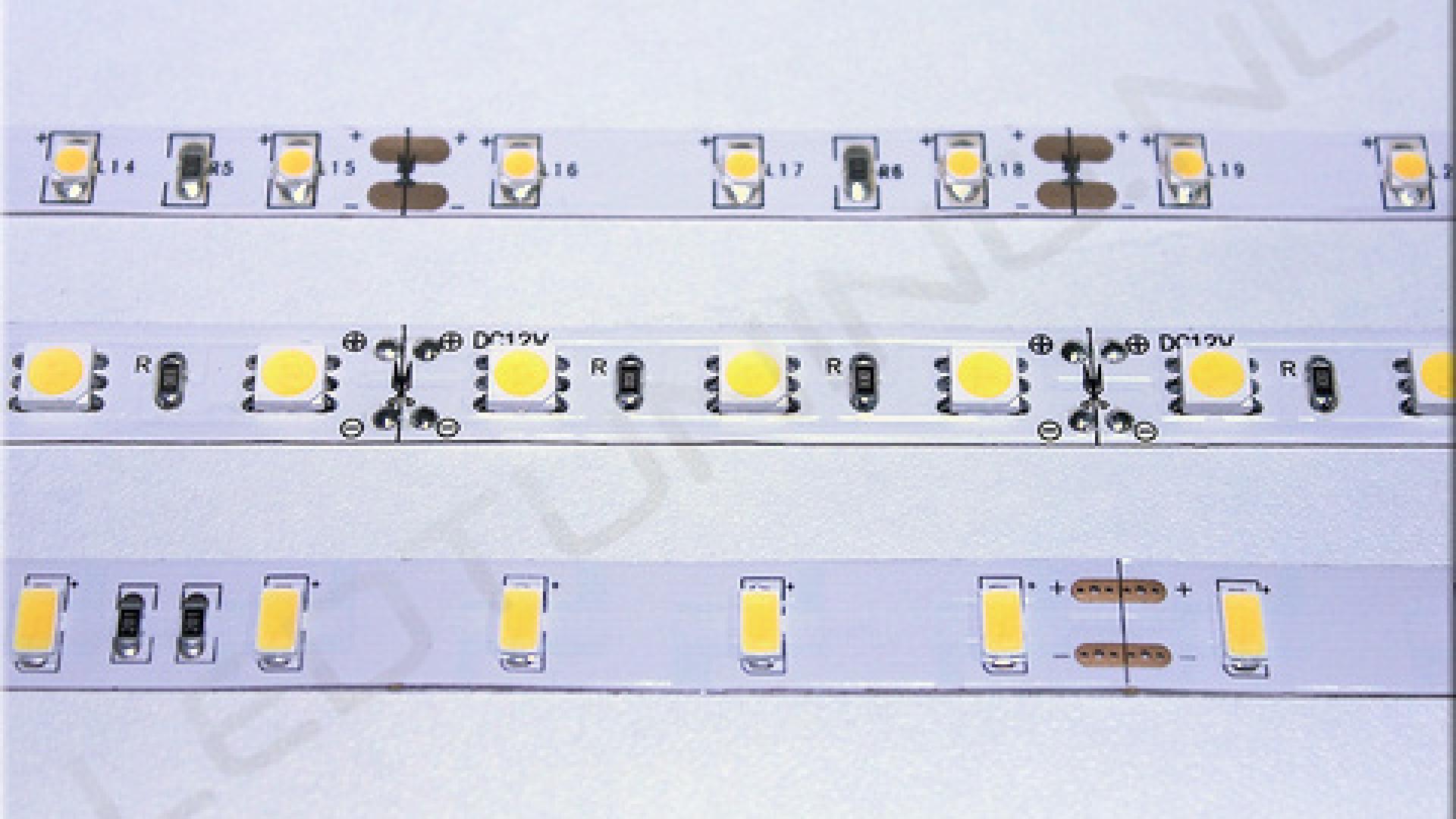It`s time for Halloween and you are looking for a new LED strip to light up your home. 2835 vs 5050, which is better? Both products are great for different purposes. 2835 is best for small projects while 5050 is better for larger projects. Here are some things to consider before making your purchase.
What do those figures mean?

The four numbers on the LED chips refer to their size in millimeters. The bigger the chip, the more extensive the diode and brighter the light– but other elements, such as density, play just as big of a role in how bright the strip will be overall. 2835 and 5050 are two of the most popular chip sizes used in LED strips.
The first two digits of the chip code represent the width, and the last digit indicates the height. For example, a 2835 strip has chips that are 2.8mm wide by 3.5mm tall, while a 5050 strip's chips are 5mm wide (5.0) and 5mm tall. It`s pretty important to know this parameter because it will help you understand how bright your LED strip will be.
The size of the chip impacts the diode that it can hold- a larger one creates brighter light. However, keep in mind that this doesn't always happen. The 2835 LED strips are more efficient than a 5050 chip because they often produce the same brightness level while drawing less power. This is partially due to the fact that the diode on the chip uses much better space.
In fact, 2835 LED strips have a higher density per chip, which means more diodes can be placed on the same-sized strip. This is why they are often used in accent lighting and signage because they are small enough to fit into tighter spaces but still provide good light output.
What does this mean for you?
Now that you know the difference between 2835 and 5050 LEDs, it`s time to decide which one is right for your needs. Bigger and brighter chips will use more electricity; however, they are not the only factor. Additionally, the 2835 chip is so efficient that it's difficult to compare it to other models. The best way to show the difference is through comparison. This particular strip is high-density, and as you can see, there is a big distinction between the two types of chips.
Thus, if you have a LED strip that is 12 watts, and it is half full of 5050 LEDs and half full of 2835 LEDs, the power usage will be 9 watts. This difference in brightness is not as drastic when you are using lower-wattage strips, but it is still a big factor to consider. It's noteworthy that 2835 also has other benefits, like more effective heat dispersion, meaning it will last longer. So, in case you need the LED strip that will serve you longer - choose 2835.

The 5050 light strip is ideal if you want a fully customizable lighting experience, as it contains the RGB chip. This combined diode creates three different colors of light, so you can mix and match to your heart's content! Besides, all RGB LED lights that you will see on the market are 5050 LEDs.
While RGB LED strips can be used for a wide variety of purposes, they are not as efficient as single-color lights. They also consume more power and produce more heat, so keep that in mind when making your decision.
Are bigger chips on LED strips more efficient?
Bigger and brighter chips will use more electricity, but they aren't the only factor to consider. The 2835 chip is more efficient than other models, so it's not a simple scale-up either. It's easiest to show a comparison. With what would be considered a high-density strip, there is a really clear difference between the two types of chips.
For instance, let`s compare the power consumption per chip and per meter of LED strip. For the 2835 product, we will have 0.2w per chip and 12w per meter. At the same time, the 5050 strips use 0.24w per and 14.4w respectively. Why? Well, it's all in the design. The 5050 LED is designed to dissipate heat more effectively, which is a big factor in longevity.
Now that we know the difference between 2835 and 5050 LEDs, it`s time to decide which one is right for your needs. Choose 2835 if you want an LED strip that will serve you longer. If you need a fully customizable lighting experience, go for 5050. But, there are still some aspects to keep in mind...

2835 vs 5050: density or chips?
Density is the characteristic that shows the number of diodes per meter. So, if your LED strip has a higher density, the number of chips will be more as well. At the same time, in case the LED strip has bigger chip sizes, it means that there are fewer chips per meter though they are larger.
Nowadays, a lot of companies tend to use 5050 chips because they are relatively big and bright. Nevertheless, there are still some manufacturers who prefer 2835 chips for their LED strips. The reason is that these chips provide a more consistent light output and color over the long run. Also, they don`t get as hot as 5050 chips do.
When it comes to density, it is worth mentioning that 2835 LED strips have a higher density per chip which means more diodes can be placed on the same-sized strip. That is why they are often used in accent lighting and signage because they manage to fit into tighter spaces but still provide good light output.
The 5050 chip measures 5mm across. It's important that the chips don't touch each other so there is space in between them for wiring. Most 5050 strips have 30 or 60 LEDs per meter because that takes up all the available space on the strip. 2835 chips can efficiently hold up to 120 LEDs per meter without issue, allowing for a significantly brighter strip light that produces up to 2,600 lumens!
However, the most significant perk of a high-density LED strip is more consistent light, the issue is not just about brightness. When LEDs are closely located to each other, the light they produce is more evenly dispersed. This means that you won`t get those bright and dark spots that are often seen with lower-density strips. All in all, high-density LED strips provide a much more consistent and even light output which makes them perfect for accent lighting and sign-making.
What are the other differences between 2835 and 5050?

When it comes to price, 2835 is definitely more affordable than 5050. This is because it is a newer technology and it doesn`t require as much investment to produce. Nevertheless, this doesn`t mean that 2835 is better than 5050 in terms of quality. In fact, these two types of LEDs are very similar in terms of lifespan, color rendering, and power consumption.
The main difference lies in their size. 5050 LEDs are significantly bigger which means they can dissipate heat more effectively. However, this also makes them more difficult to work with since they can`t be placed as close together as 2835 chips can.
So, if you are looking for a cheaper option, go for 2835. But, if you need an LED strip that can be placed closer together and can dissipate heat more effectively, choose 5050.
Conclusion
The main difference in the 2835 vs 5050 comparison lies in their design. 5050 is designed to dissipate heat more effectively while 2835 is a newer technology and doesn`t require as much investment to produce. Nevertheless, these two types of LEDs are very similar in terms of lifespan, color rendering, and power consumption.
The main difference lies in their size. 5050 LEDs are significantly bigger which means they can dissipate heat more effectively. However, this also makes them more difficult to work with since they can`t be placed as close together as 2835 chips can.
Those individuals who need brighter LED strip lights that can provide more consistent light output over the long run should opt for 2835. On the other hand, those who are looking for an LED strip that can dissipate heat more effectively and can be placed closer together should choose 5050.